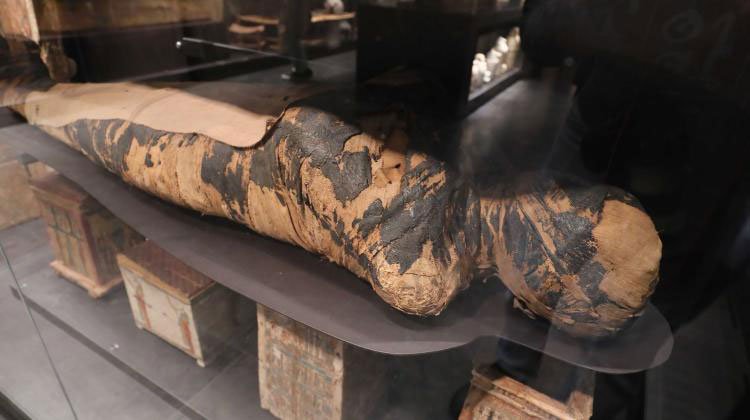Distortions in the facial skeleton of a 2,000-year-old Egyptian mummy may indicate that it suffered from nasopharyngeal cancer.
acial skeletal defects in a 2,000-year-old Egyptian mummy may indicate that it had nasopharyngeal cancer, according to anthropologist Marzena Ożarek-Szilke from the interdisciplinary Warsaw Mummy Project and the Department of Oncology at the Medical University of Warsaw.
“First of all, according to mummy experts, we see unusual changes in the nasopharyngeal bones that are not specific to the mummification process,” says Professor Rafał Stec from the Department of Oncology at the Medical University of Warsaw.
- An Amber-Trapped Wasp, Flower, and Fly Reveal a 30-Million-Year-Old Microcosm
- Humor has many different functions; In this article we look at five of them
“Secondly, the opinion of radiologists based on computed tomography results suggests the possibility of tumor changes in the bones.”
The young age of the deceased and the absence of any other cause of death also points to a high probability of an ‘oncological cause’.
“At the moment, a malignant tumor is suspected. A definitive diagnosis is only possible after a histopathological examination that will be 100 percent accurate.”
Mummy researchers now plan to collect tissue samples and compare them with cancer samples from other Egyptian mummies stored in tissue banks in the US and UK.

Cancer was not uncommon in ancient Egypt and there are few confirmed cases of nasopharyngeal cancer.
The researchers think that analyzing the mummy could contribute to the development of modern medicine by revealing the ‘molecular signature’ of this cancer, which can be compared to cancers occurring now.
It is also hoped that this will expand knowledge about cancer evolution and point the way to further research directions in both diagnosis and treatment.
More planned research aims to identify the cause of the disease. For example, whether it is associated with a viral infection such as HPV or a genetic background.
The genetic analysis of the collected tissues will be carried out by Professor Tomasz Stokłosa from the Department of Cancer Biology and Genetics at the Medical University of Warsaw. The results of this study, which will take several months, could be ready by the end of this year.

The mummy was brought to Poland by Jan Wężyk-Rudzki in 1826 or 1827. A recent study identified it as a female mummy. In 2021, researchers reported that the mummified woman was pregnant. The mummy, owned by the University of Warsaw since 1917, has been on loan to the National Museum in Warsaw. It is on display together with the sarcophagus in the permanent exhibition of the Gallery of Ancient Art.
Science in Poland. July 8, 2022.





